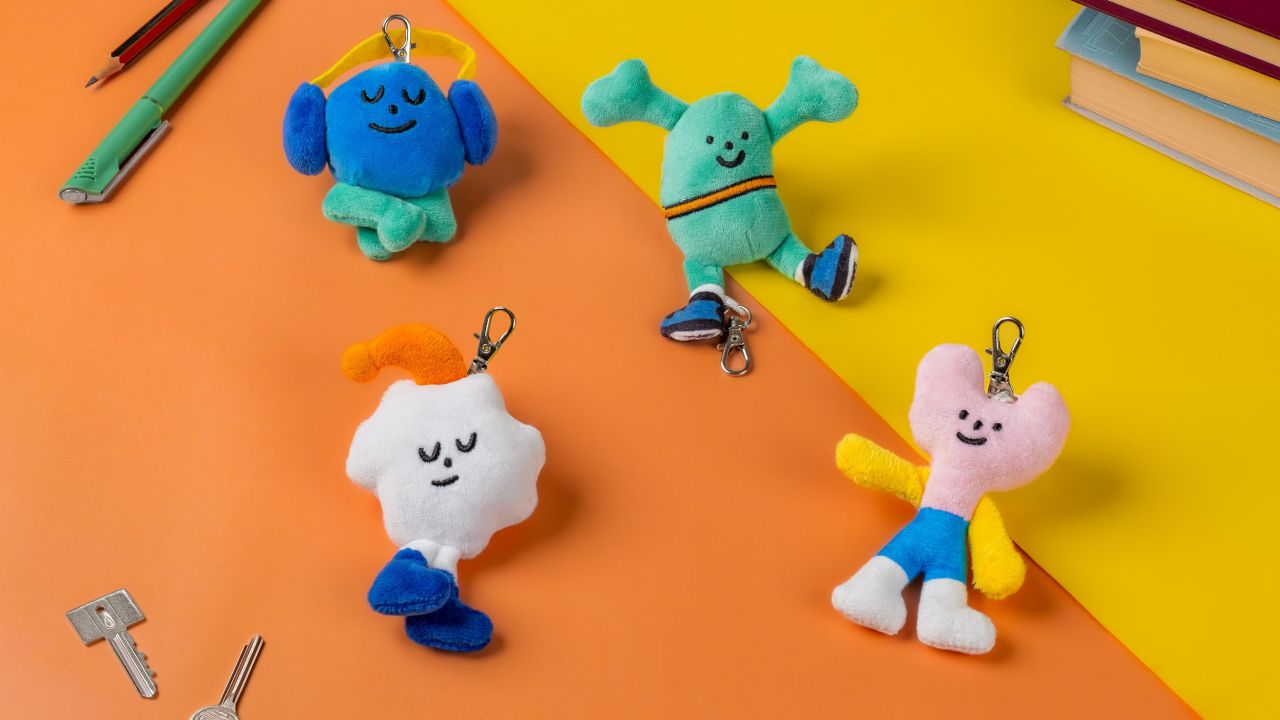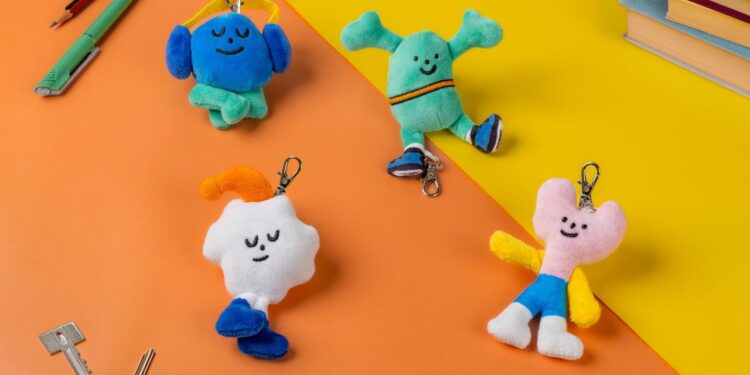
Creating custom plush toys is a fascinating process. It goes beyond simply sewing fabric and stuffing materials together. It’s an art form that requires creativity, skill, and careful planning. Making a plush toy is about understanding the character, picking the right materials, and bringing the design to life.
In this blog post, we will explore the detailed process of designing custom plush toys. From the initial idea to the final product, each step requires precision and imagination. Let’s dive into this exciting journey of creating these soft, huggable companions!
Understanding the Concept
The first and most important step in creating a custom plush toy is understanding the concept. This step requires thinking about what the toy represents. Is it a beloved character from a popular TV show or cartoon? Is it a company mascot or a unique creation for a special event? Knowing the purpose of the plush toy is crucial because it guides the entire design process.
For instance, if the plush toy is designed for a children’s event, it needs to be cute, colorful, and appealing to kids. On the other hand, if it’s for a company mascot, it should represent the brand’s personality and values. Designers spend a lot of time thinking about who the toy is for and what it should represent. They often hold brainstorming sessions and sketch their ideas to visualize the character. These sketches are the first step in turning an idea into a real-life plush toy.
This stage is fun and creative, but it’s also challenging. Designers must ensure that the toy’s appearance matches its purpose. A toy meant to bring comfort must have a soft and gentle expression, while a playful toy might have a big, smiling face. These details help make the toy unique and meaningful for those who will eventually receive it.
Choosing the Right Materials
Once the concept is clear, the next step is selecting the right materials. This is an essential part of the process because the quality of the materials determines how the plush toy will look and feel. Plush toys are designed to be soft and cuddly, so the fabric must be comfortable to touch. But it also needs to be durable, especially if the toy is for children who will play with it often.
Designers have many options when it comes to choosing fabrics. Some fabrics are soft and fluffy, while others are smooth and sleek. The choice of material depends on the character of the toy. For example, a fluffy fabric might be perfect for a teddy bear, while a shiny fabric might be better suited for a magical unicorn.
In addition to fabric, the stuffing inside the toy is also important. The stuffing must be soft enough to hug but firm enough to hold the toy’s shape. Designers also carefully select other components, such as the eyes, nose, and any accessories the toy might have. These small details can make a big difference in how the toy looks and feels.
Safety is another critical factor when choosing materials. Plush toys, especially those for children, need to be made from materials that are safe and non-toxic. Designers must ensure that the toy does not have small parts that could be a choking hazard. By using high-quality, safe materials, designers create plush toys that are not only fun but also safe for everyone to enjoy.
Crafting the Prototype
After the concept and materials are selected, the next step is creating a prototype. This is where the design starts to come to life. A prototype is a sample version of the plush toy that allows designers to see how their ideas translate into a real object.
Making the prototype is an exciting stage because it’s the first time the toy becomes more than just a drawing on paper. However, this stage can also be tricky. Sometimes, the design looks different in real life than it does on paper.
For example, the toy’s ears might be too big, or the arms might be too long. The prototype allows designers to spot these issues and make adjustments before moving on to the next stage.
Designers may need to create several prototypes before they are satisfied with the final design. Each prototype helps them fine-tune the toy, making it look just right. It’s also common for designers to get feedback from clients or focus groups during this stage. This feedback helps ensure that the toy meets the expectations of those who will be using it.
Finalizing the Design
Once the prototype is approved, it’s time to finalize the design. This step involves creating detailed instructions for how the plush toy will be produced. These instructions include things like patterns, measurements, and color guides. By having clear guidelines, designers ensure that each plush toy produced looks the same as the approved design.
Finalizing the design is a crucial step, especially if the plush toy is going to be mass-produced. Consistency is important because every toy needs to look and feel the same, whether it’s the first one off the production line or the last. Designers take great care in making sure every detail is perfect before moving on to production. Even small changes at this stage can be costly, so it’s important to get everything right.
Bringing the Plush Toy to Life
Now comes the most exciting part: bringing the plush toy to life through mass production. Once the design is finalized, the toy is ready to be produced in large quantities. This step involves sewing the fabric, adding the stuffing, and attaching all the little details like the eyes, nose, and accessories.
Mass production can be a complex process, especially when it comes to ensuring quality. Every plush toy must meet high standards of craftsmanship. This means that each toy should be sewn correctly, with no loose stitches or uneven seams. The stuffing should be evenly distributed, and all the details should be securely attached.
Quality control is essential at this stage. Designers and manufacturers check each plush toy carefully to ensure it meets the desired standards. If there are any issues, they can be corrected before the toys are sent out to customers. By paying close attention to detail, designers create plush toys that are not only adorable but also well-made and durable.
The Unique Nature of Custom Plush Toys
One of the most exciting things about custom plush toys is that each one is unique. Unlike mass-produced toys found in stores, custom plush toys are designed for a specific purpose and audience. This makes them special and meaningful.
For example, a custom plush toy could be designed as a gift for a child, featuring their favorite character or even their name. Or it could be a company mascot that represents a brand’s values and personality.
Custom plush toys often have a personal touch that makes them stand out. Whether it’s the choice of fabric, the color of the toy, or the expression on its face, every detail is carefully thought out to create something special. This personal touch is what makes custom plush toys so cherished by those who receive them.
The Emotional Connection with Plush Toys
Plush toys hold a special place in many people’s hearts. They are more than just toys; they are companions, comforters, and keepsakes. Many children form strong emotional bonds with their plush toys, treating them as friends or even members of the family. This emotional connection is one of the reasons why custom plush toys are so popular.
When a plush toy is designed with care and attention to detail, it becomes more than just a product. It becomes a source of comfort and joy for the person who receives it. Custom plush toys, in particular, have the power to create lasting memories. Whether it’s a child cuddling their favorite teddy bear at night or an adult keeping a plush mascot as a reminder of a special event, these toys often hold sentimental value.
Why Custom Plush Toys Are So Popular
There are many reasons why custom plush toys have become so popular in recent years. One reason is that people love the idea of owning something unique and personal. Custom plush toys allow individuals and companies to create products that reflect their personalities, interests, or brands. This level of personalization is hard to find in mass-produced toys.
Another reason for their popularity is that custom plush toys are perfect for a wide range of occasions. They make great gifts for birthdays, holidays, or special events. Companies often use them as promotional items, while schools and sports teams might create custom mascots to represent their organizations. The possibilities are endless, and this versatility is one of the reasons why custom plush toys continue to grow in popularity.
Read Also: Things to Consider When Shopping for a Baby Soothing Toy
Custom Plush Toys for Businesses
Custom plush toys are not just for kids. Many businesses use them as promotional items or brand mascots. A custom plush mascot can help a company stand out and leave a lasting impression on customers. For example, a company might create a plush version of its logo or mascot to give away at events or sell as part of its merchandise.
These plush mascots can be a fun and memorable way to promote a brand. They create a sense of connection between the company and its customers, as people tend to form emotional attachments to plush toys. Whether it’s a cute animal or a character representing the company’s values, a custom plush mascot can be a powerful marketing tool.
Creating Custom Plush Toys for Special Events
Custom plush toys are also a popular choice for special events. For example, schools might create custom plush mascots to represent their teams, while companies might design plush toys as giveaways for conferences or product launches. These toys are a fun and creative way to commemorate important occasions.
Designing a plush toy for a special event involves thinking about what the event represents and how the toy can capture that spirit. Whether it’s a plush version of a school mascot or a toy designed to celebrate a new product, custom plush toys can add a unique and memorable touch to any occasion.
The Importance of Quality Control
As with any product, quality control is essential for custom plush toys. Since these toys are often designed for children, they must meet high safety standards. Manufacturers check each toy carefully to ensure that it is safe, durable, and free of defects.
Quality control also ensures that the toys are made to the highest standards of craftsmanship. From the stitching to the stuffing, every detail is checked to make sure the toy meets the designer’s specifications. This attention to detail helps create plush toys that are beautiful and built to last.
Conclusion: A Soft and Huggable Art Form
Designing custom plush toys is more than just sewing fabric and stuffing it with fluff. It’s an art form that requires creativity, skill, and a deep understanding of both the materials and the audience. From the initial concept to the final product, every step in the process is crucial in creating a unique and cherished toy.
Whether you’re designing a character for a company mascot or creating a one-of-a-kind gift, understanding the process of making custom plush toys ensures that the final product is more than just a toy. It’s a memorable keepsake that resonates with the person who receives it. Custom plush toys have the power to bring comfort, joy, and a little bit of magic into people’s lives.















































